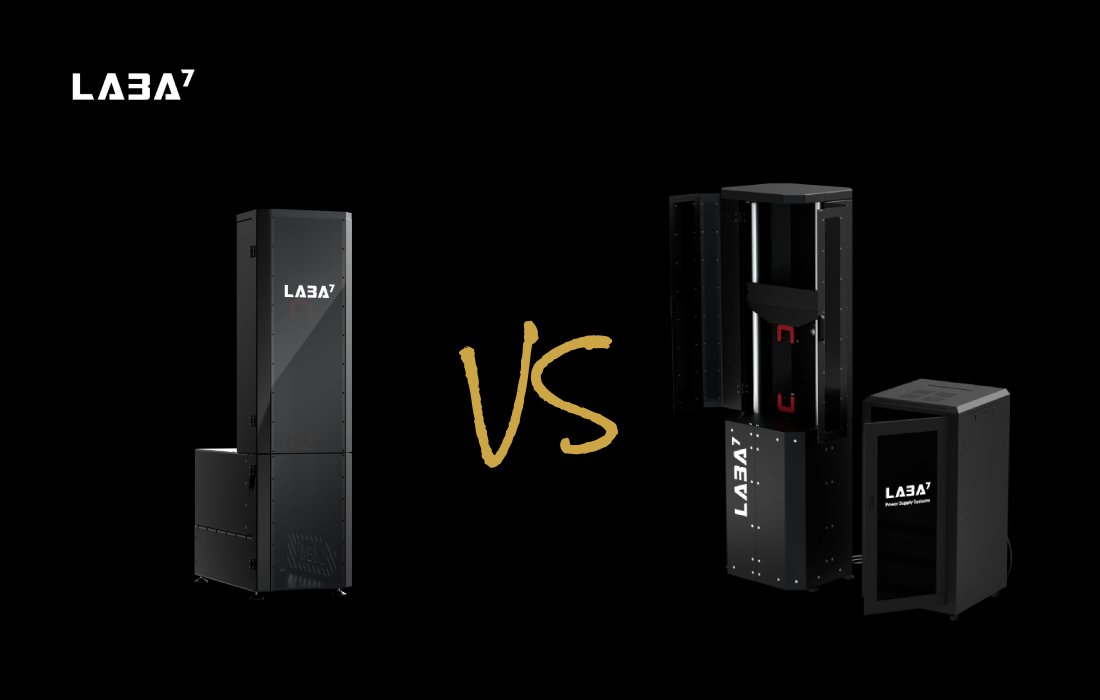There are several types of shock dynos in the market. Basically, there are two main groups depending on what motor powers them.
Crank shock dynos are cheap but their data samples typically require a lot of digital filtering that translates into less accurate test results. While shock dynos with Scotch-Yoke mechanism provide significantly less filtered data that shows even small changes in damper performance. They also are very affordable.
Hydraulic shock dynos are very powerful and offer extensive testing capabilities but they are very expensive, loud, and dangerous if not maintained properly. On the other hand, electromagnetic ones offer the same power and testing capabilities but are very quiet, efficient, and more affordable.
At LABA7, we focused our resources on developing and perfecting electromagnetic linear actuator and Scotch-Yoke shock dynos as they are superior technologies. They provide excellent accuracy and great value for money.
But how are they different?
EMA vs Other Shock Dynos of LABA7
Electromagnetic Actuator (EMA) shock dynos and Scotch-Yoke shock dynos both serve the purpose of testing shock absorbers, but they differ significantly in their mechanisms and performance capabilities.
EMA shock dynos offer greater precision, control, flexibility, and overall better performance, making them suitable for a wide range of testing scenarios. However, this comes with higher costs and increased complexity.
In contrast, Scotch-Yoke shock dynos are simpler, more robust, and cheaper but have limitations in control and versatility. The choice between the two depends on the specific requirements and constraints of the testing environment.
Precision and Control Flexibility
- EMA offers high precision and control over movement, allowing to replicate of real-life conditions in a test environment. The use of an electromagnetic linear actuator and feedback systems enables precise control of velocity, displacement, and force. EMAs can be programmed to simulate a wide variety of motion profiles, including non-sinusoidal waveforms, making them more versatile for different types of shock absorber testing.
- Scotch-Yoke provides only a sinusoidal motion that may not be as easily controlled or adjustable.
Speed and Range
- EMA can achieve a wide range of speeds and displacements, making it suitable for testing shocks under various conditions, from very slow to very fast movements. Typically, EMA systems are much more powerful than Scotch-Yoke dynos.
- Scotch-Yoke: The speed and force are typically more limited and fixed by the mechanical design.
Maintenance
- EMA: Electromechanical systems may require less maintenance as there are fewer mechanical wear points compared to a Scotch-Yoke shock dyno.
- Scotch-Yoke: The mechanical nature of the Scotch-Yoke can lead to higher wear and tear, requiring more frequent maintenance.
You also might like these articles:
- LABA7 Unveils New Specs for Electromagnetic Shock Dyno
- HIL Testing and Electromagnetic Actuators in Suspension Testing
- LABA7 EMA vs Alternatives
- LABA7 Introduces Novel Power Supply System for Electromagnetic Shock Dyno
- Electromagnetic Linear Actuator vs Scotch-Yoke Shock Dyno: Which One To Choose?
- EMA Power Supply Unit Shortlisted for Innovation of the Year 2024

